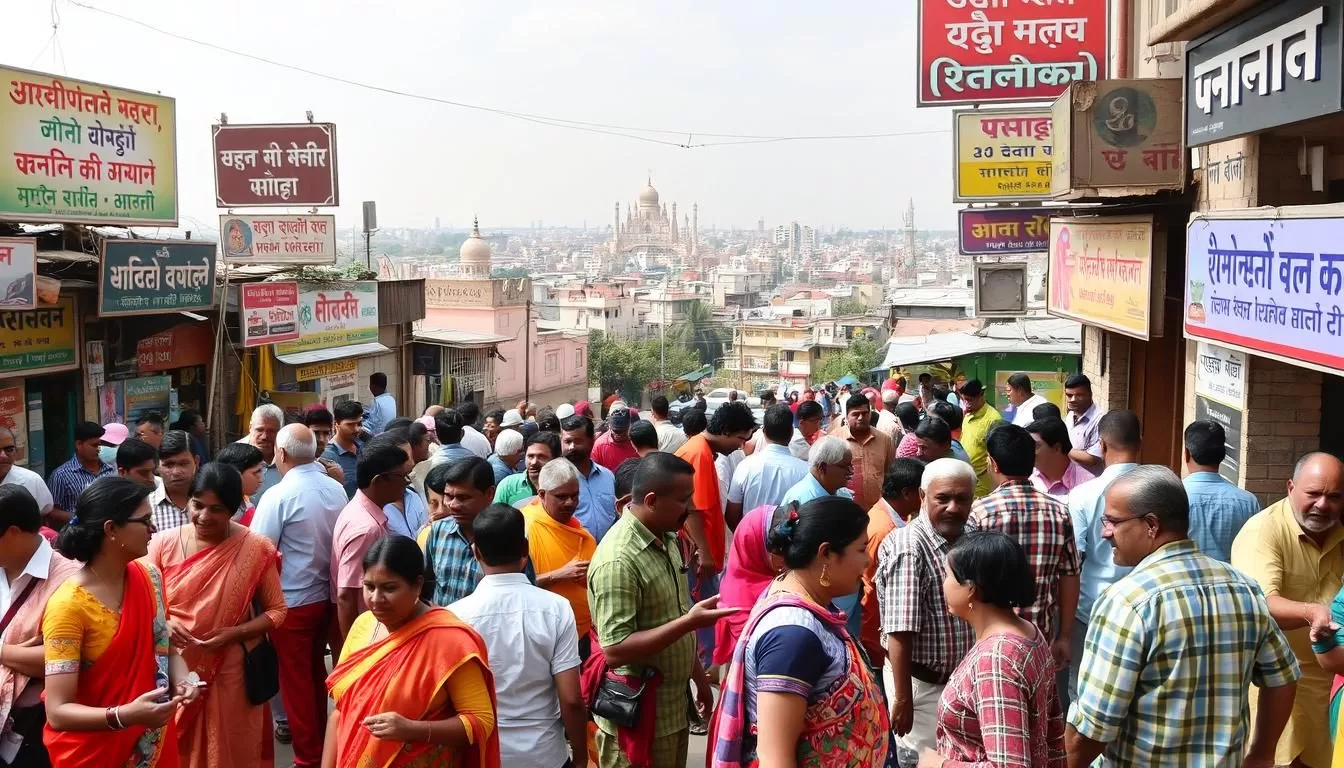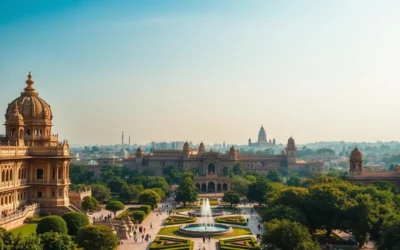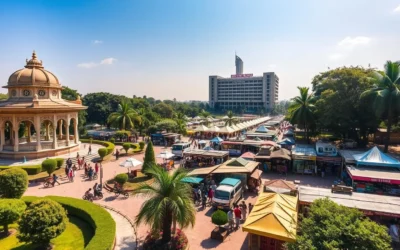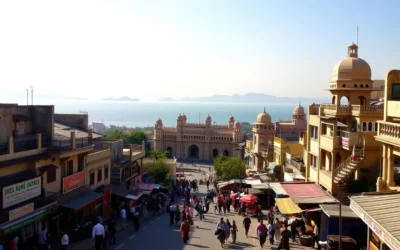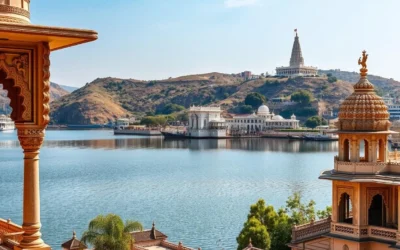✓ Accommodations✓ Flights✓ Rental Cars✓ Tours & Activities
You’re about to explore one of India’s most linguistically diverse states, where a multitude of languages are spoken across its vast landscape. With approximately 90 languages spoken, Gujarat represents a fascinating linguistic mosaic within the country.
Gujarati is the official language of the state, but numerous regional dialects and minority languages contribute to its rich cultural heritage. The linguistic diversity of this region reflects its historical position as a crossroads of trade, culture, and migration throughout the centuries.
As you visit different regions, you’ll notice distinct variations in language, from the Kathiawadi dialect in Saurashtra to Kutchi in the Kutch region. Understanding the language landscape helps you appreciate the state’s cultural complexity.
The Linguistic Landscape of Gujarat
As you explore Gujarat, you’ll discover a rich tapestry of languages and dialects. The state’s linguistic diversity is a reflection of its cultural heritage and historical influences. Gujarat’s unique position in India’s language mosaic makes it a fascinating case study.
Gujarat’s Position in India’s Language Mosaic
Gujarat is an integral part of India’s linguistic diversity, contributing significantly to the country’s language landscape. The state’s spoken language, Gujarati, is widely spoken and plays a crucial role in shaping the cultural identity of its people. Gujarat’s linguistic heritage is characterized by a blend of various languages spoken across different regions.
Language Diversity Across Different Regions
The linguistic diversity across Gujarat’s different regions is remarkable. You’ll find distinct dialects and language variations as you travel through the state. For instance:
- The Saurashtra region features the Kathiawadi dialect.
- South Gujarat is known for the Surti dialect, which is primarily spoken in the Surat area.
- The Kutch region has its own distinct Kutchi language.
- The central plains, known as Charotar, have developed the Charotari linguistic variation.
- Urban centers like Ahmedabad and Vadodara have their own urban dialects influenced by migration and cosmopolitan factors.
This diversity highlights how geography, history, and cultural exchange have shaped the languages and dialects across Gujarat, making it a unique linguistic landscape.
Gujarati: The Official Language of Gujarat
As you explore the linguistic landscape of Gujarat, you’ll discover the significance of Gujarati as the official language. Gujarati is not just a means of communication; it’s a vital part of the state’s identity and cultural heritage. With 55.4 million people speaking Gujarati, it’s a language that holds considerable importance both within India and globally.
History and Evolution of Gujarati
Gujarati is of Sanskrit descent and has been influenced by various languages, including Dravidian, Arabic, Portuguese, English, Persian, and Turkish. This blend of linguistic influences reflects the historical and cultural exchanges that have shaped the language over time. The evolution of Gujarati is a testament to the region’s strategic position and its role in historical trade and cultural exchange networks.
The language has developed distinct dialects and variations, reflecting the diversity within Gujarat. Understanding the history and evolution of Gujarati provides insights into the language’s complexity and its role in the lives of its speakers.
Gujarati Script and Literary Tradition
The Gujarati script is derived from the Devanagari script, with modifications that suit the phonetic characteristics of the Gujarati language. Gujarati has a rich literary tradition, with a body of work that includes poetry, novels, and other forms of creative writing. The literary heritage of Gujarati is a significant aspect of Gujarat’s cultural identity, reflecting the values, traditions, and history of the people.

Global Reach of Gujarati Speakers
Gujarati speakers are found across the globe, with significant populations in the United States, United Kingdom, Canada, Australia, and East African country like Kenya and Uganda. The global Gujarati diaspora, estimated at over 4 million people, has established cultural centers and language schools to maintain their linguistic heritage. Gujarati ranks as the 26th most spoken language in the world with approximately 55.4 million speakers, making it a significant global presence.
The business acumen of Gujarati speakers has led to the language‘s presence in international trade networks, including diamond markets from Antwerp to New York. Digital technology has further expanded Gujarati’s reach, with dedicated keyboards, fonts, and online content making the language accessible to speakers worldwide.
Regional Dialects of Gujarati in Gujarat
As you explore the linguistic landscape of Gujarat, you’ll discover a rich variety of regional dialects that add to the state’s cultural diversity. Gujarat is known for its linguistic diversity, with people speaking about 90 languages across the state. The diversity is particularly notable in districts like Surat, where around 57 different languages are spoken.
Kathiawadi: The Dialect of Saurashtra Region
The Kathiawadi dialect is predominantly spoken in the Saurashtra region. It has distinct features shaped by the region’s history and cultural practices. Kathiawadi has a unique flavor, influenced by the maritime activities and trade that have historically characterized this coastal area.
Surti: The Southern Gujarat Dialect
Surti is the dialect spoken in southern Gujarat, particularly around Surat. It is known for its distinct vocabulary and pronunciation, reflecting the region’s history as a significant trading hub. Surti has absorbed influences from various languages due to the region’s historical connections with different parts of the world.
Charotari: Central Gujarat’s Linguistic Identity
Charotari is the dialect of central Gujarat, known for its rich literary tradition. It represents the linguistic identity of the region, with its own nuances and expressions that are characteristic of the local culture.
Other Notable Regional Variations
Gujarat is home to numerous other regional variations, including Ahmedabadi, Pattani, and tribal-influenced dialects. The coastal dialects of southern Gujarat feature unique vocabulary related to fishing and maritime activities. Even within cities, neighborhood-specific speech patterns exist, reflecting historical settlement patterns.
| Dialect | Region | Characteristics |
|---|---|---|
| Kathiawadi | Saurashtra | Influenced by maritime activities |
| Surti | Southern Gujarat | Distinct vocabulary and pronunciation |
| Charotari | Central Gujarat | Rich literary tradition |
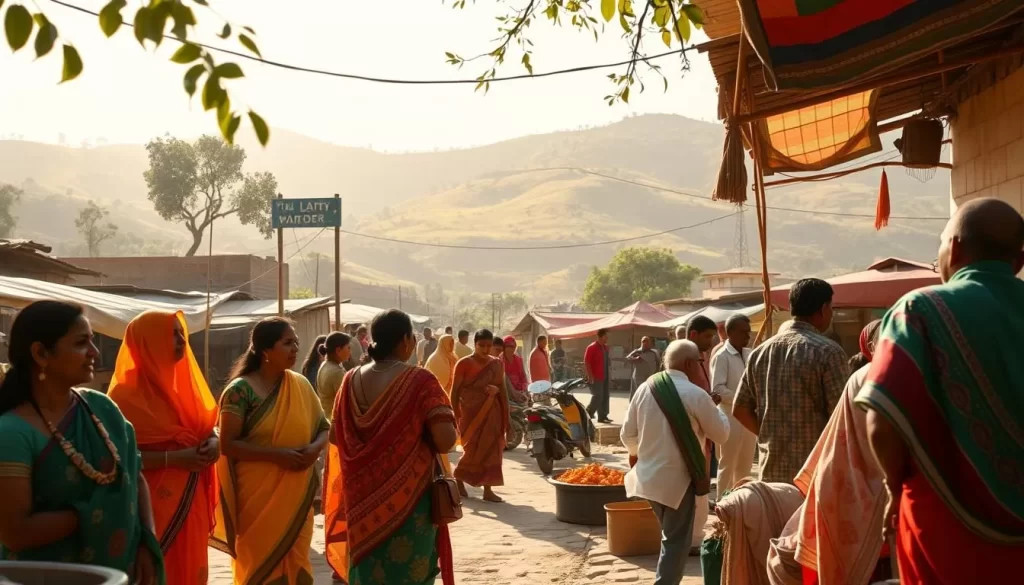
Understanding these diverse regional variations helps you appreciate the full spectrum of Gujarati dialects and how they form a continuum rather than discrete language varieties. The linguistic diversity of Gujarat is a testament to its rich cultural heritage.
Kutchi: A Distinct Language of Gujarat’s Kutch Region
As you explore the linguistic diversity of Gujarat, you’ll discover Kutchi, a distinct language spoken in the Kutch region. This unique dialect is an integral part of the region’s identity.

Historical Development of Kutchi
The historical development of Kutchi is closely tied to the history of the Kutch region itself. Over time, Kutchi has evolved, influenced by various cultural and geographical factors. It has developed distinct characteristics that differentiate it from other languages.
Relationship with Sindhi and Gujarati
Kutchi shares a significant relationship with both Sindhi and Gujarati, reflecting the historical and cultural exchanges between the regions where these languages are spoken. While Kutchi is closely related to Sindhi due to geographical proximity, it is also intricately linked with Gujarati, being part of the same state. This relationship enriches the language and culture of the Kutch region.
Cultural Significance and Usage
Kutchi plays a vital role in preserving and promoting the local culture and identity. It is used in various forms of expression, including storytelling, folk songs, and community gatherings, thus keeping the traditions alive. The people of Kutch take great pride in their language, using it in daily communication and cultural events. Kutchi is essential to the region‘s heritage, contributing to Gujarat’s linguistic diversity.
Efforts to document and promote Kutchi among younger generations are underway, ensuring its continued relevance and usage. As a result, Kutchi remains a vibrant part of the Kutch region‘s identity, reflecting its rich history and traditions.
Other Languages Spoken in Gujarat
You can hear a variety of languages being spoken in Gujarat, showcasing the state’s linguistic diversity. This diversity is a result of the state’s strategic location and its history of migration and cultural exchange.
Hindi and Its Influence
Hindi, being one of the official languages of India, has a significant presence in Gujarat. It is widely understood and spoken, particularly in formal and official contexts. The influence of Hindi is evident in media, education, and government services.
English in Education and Business
English plays a crucial role in Gujarat, particularly in the domains of education and business. It is the language of commerce and is widely used in higher education, making it an essential skill for the state’s workforce.
Minority Languages and Tribal Dialects
Gujarat is home to a number of minority languages and tribal dialects, adding to its linguistic richness. The eastern tribal belt is home to approximately 2 million speakers of Bhili and its dialects. Other languages such as Gamit, Chaudhari, and Konkani are spoken in southern Gujarat.
| Language/Dialect | Region | Approximate Speakers |
|---|---|---|
| Bhili | Eastern Tribal Belt | 2 million |
| Gamit | Southern Gujarat | N/A |
| Chaudhari | Southern Gujarat | N/A |
| Konkani | Southern Gujarat | N/A |
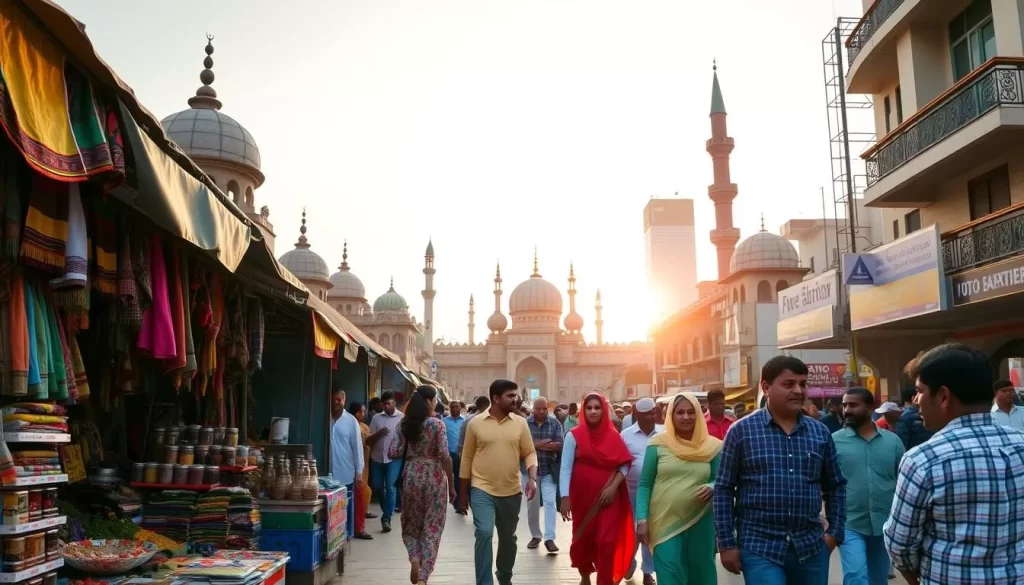
The presence of these languages highlights Gujarat’s role as a microcosm of India’s broader linguistic diversity. Understanding and appreciating these minority languages and dialects is crucial for preserving the state’s cultural heritage.
Gujarat, India: Official and Widely Spoken Languages in Cultural Context
As you explore the cultural landscape of Gujarat, you’ll discover how language plays a pivotal role in shaping the state’s identity. The languages spoken in Gujarat are not just a means of communication; they are deeply intertwined with the state’s cultural heritage.
Language and Cultural Identity
Gujarat’s rich literary tradition is a testament to the state’s cultural identity. The language spoken here is a reflection of the state’s history, customs, and values. You’ll find that the Gujarati language is not just a form of expression but a vital part of the state’s cultural fabric.
Festivals and Traditions Expressed Through Language
Language plays a significant role in Gujarat’s festivals and traditions. During Navratri, for instance, the state’s folk literature and music come alive, showcasing the rich literary heritage of Gujarat. The use of language in these contexts helps preserve the state’s cultural traditions.
Literature and Arts in Gujarat’s Languages
Gujarat’s literary history is dating back centuries, with significant milestones achieved in the mid-19th century, including the first personal diary in 1840 and the first novel, “Karan Ghelo,” in 1866. The state’s literary tradition continues to thrive, with contemporary literature adapting to modern realities while maintaining its linguistic essence.
The state has produced internationally recognized literary figures like Umashankar Joshi and Rajendra Shah, whose works have been translated into multiple languages. Understanding Gujarat’s rich literary heritage helps you appreciate how language preservation and development occur through creative expression.
Conclusion: The Future of Gujarat’s Linguistic Heritage
You’ll find that Gujarat’s languages are not just a means of communication but a window into the state’s soul. The linguistic mosaic of Gujarat is a testament to the inclusive and multicultural nature of the state, where people from various linguistic backgrounds coexist and celebrate their rich linguistic heritage.
The state government has implemented initiatives to promote Gujarati and protect minority languages, including educational programs and digital resources. However, Gujarat faces challenges in preserving its linguistic heritage, with globalization creating pressure toward language standardization.
The future of Gujarat’s linguistic landscape will be shaped by balancing tradition with innovation, with new technologies creating opportunities for language documentation and creative expression. As one of India’s economically dynamic states, Gujarat demonstrates how linguistic diversity can coexist with modernization and development.
The above is subject to change.
Check back often to TRAVEL.COM for the latest travel tips and deals.
